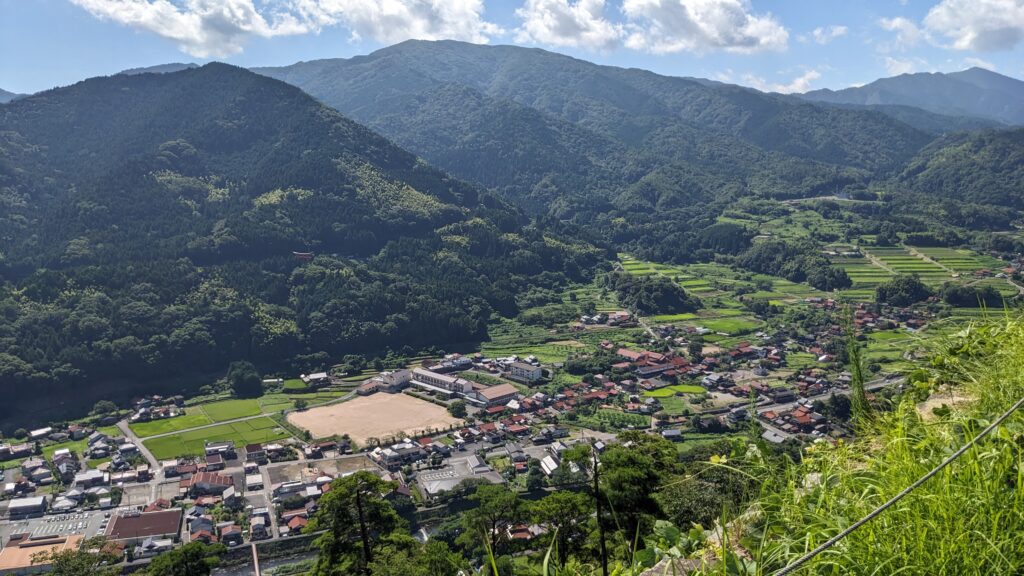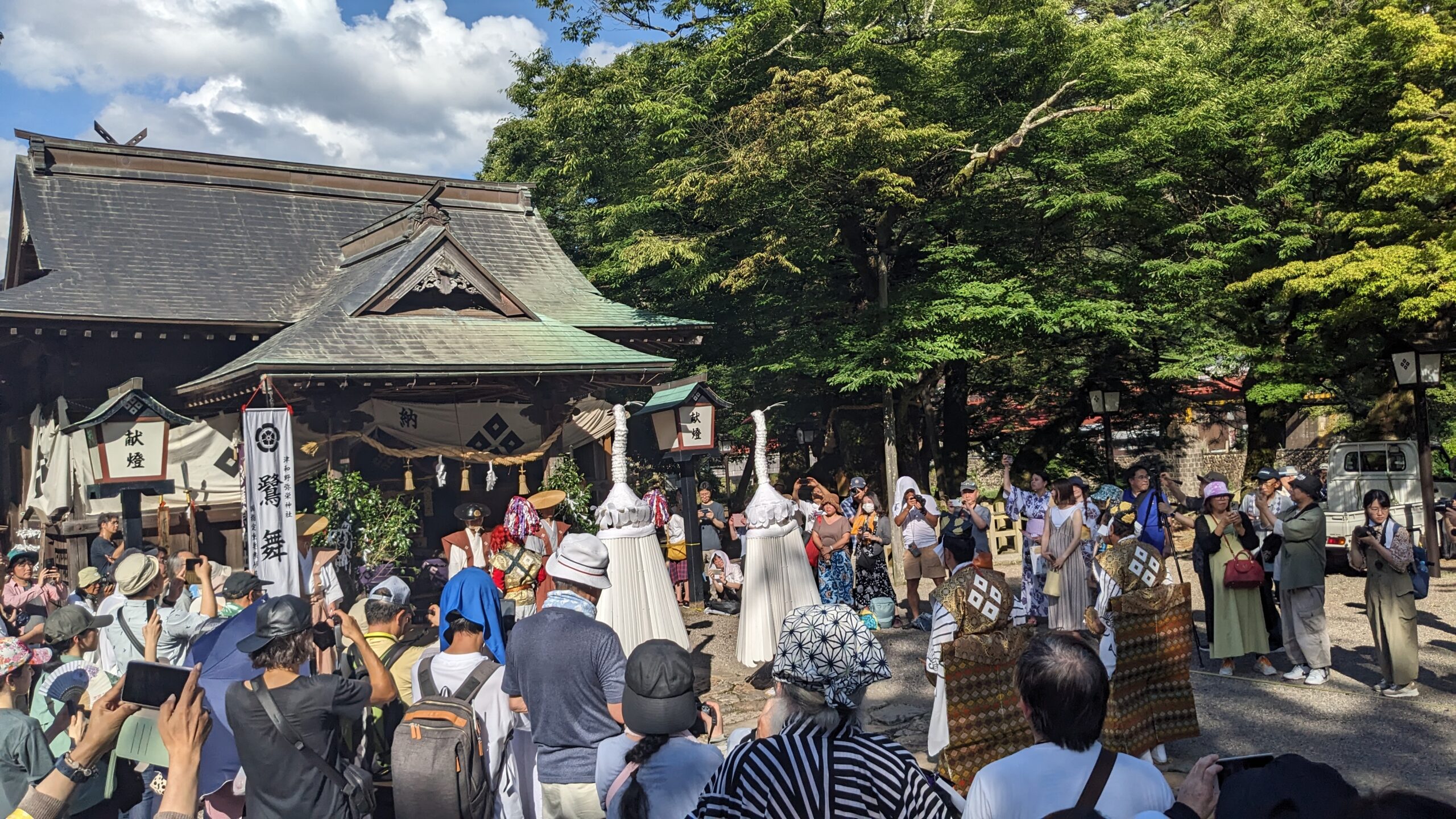There is a rare gem hidden in the hills west of Hiroshima, an hour’s drive from the nearest fast food chain. This is Tsuwano, the “Little Kyoto” of the San’in area, a little town that was once the capital of a feudal lord’s domain, where their oldest traditions are still maintained with a passion and reverence not unlike what the engineers show for the hundred-year-old steam locomotive that still regularly rolls into the train station here. The modern daily lives of the people living here is inseparable from their own town’s hundreds of years of history. Children walk past the former mansions of samurai on their way to school. Meanwhile, their family members and neighbors make preparations for the Gion festival that takes place every summer. This Shinto celebration features the Sagimai or Sacred Heron Dance, a ritual that has been practiced for nearly 500 years and has been registered as a UNESCO Intangible Cultural Heritage.
If you’ve never heard of Tsuwano, you’re not alone. This is one of the rare cases where phrases like “hidden gem” and “off the beaten path” can be applied without risk of exaggeration. Tsuwano really is a hidden gem, that’s the truth. But its lack of fame is surely due to the simple fact that it is a small town far from the bright lights of Tokyo or the lines of people waiting outside Kyoto’s temples–in other words, far from the typical routes typical travelers to Japan take–and certainly not due to a lack of charm or value. In fact, that it is so small and isolated, so unknown and unvisited, is perhaps the precise reason why its charm has never been diluted by throngs of noisy tourists and rows of towering luxury hotels with their brand names prominently displayed in golden lettering. The people here maintain their history, their culture, and their warmheartedness because that is what they’ve always done–for their own sake and for the generations that came before and those still to come–not to meet a quota of visitors.

History
With a loud whistle and a cloud of smoke, the Yamaguchi-go steam locomotive rolls into Tsuwano Station on a sunny summer day. Above, a path through a tunnel of a thousand torii gates leading to Taikodani Inari Shrine snakes up the hillside, and farther up the hillside still is the site where the feudal lord’s castle once stood, the tops of the towering stone outer walls that still remain offering spectacular views of the entire valley. A short walk in the opposite direction from the station and you are wandering among the innumerable historic buildings in the Tonomachi district–Tsuwano’s downtown area that has been so since the feudal era. Here you will see and hear and smell the proof that these buildings, some hundreds of years old, are still fixtures of daily life, just as they have always been. Of course, some have changed their purpose over the years–there is a cafe with an exquisite garden that was once a samurai’s home and a museum that was once a school–but others have not. There is a seed shop that has been one for generations, and the same is true for the pharmacy and two sake breweries, all of whose patrons and staff greet each other as neighbors every day. All these time capsules were never buried or forgotten by the families that have lived and worked in and around them. Even the town hall itself is in the very same building that has housed government offices since the Edo period.

Tradition
With its rich history comes rich culture, and there are many unique and fascinating cultural events that take place annually in Tsuwano. Chief among them in spiritual significance, perhaps, is the Gion festival that takes place every July 20th and 27th. While Kyoto’s Gion festival, which is where Tsuwano’s traditions originated, is perhaps the most famous festival in Japan, the two versions differ significantly. On the first and last days of Tsuwano’s version of the festival, a procession of performers in incredible regalia roam the town, stopping at various points to perform the Sagimai, or Sacred Heron Dance. While the dance originated in Kyoto some 500 years ago and spread to a number of realms, the only place where it can still be witnessed today is in the little town of Tsuwano.
Two white herons, one representing a male and the other female, dance around each other in slow, careful movements–the wooden slats of their wings clacking together produce a rhythmic sound that, when combined with the singers, drums, chimes, and flutes behind them, is somber, beautiful and otherworldly all at once. Just behind the herons are two more dancers, the kakko mai, the deeper meaning of whose roles has been lost to time. Their movements are usually slow and deliberate like the herons with some shared movements, but they occasionally incorporate short, almost playful hops, an element unseen in any other traditional Japanese dance of the like, which has led experts to think their role may have had a childish or clownish origin. Encircling both the pair of herons and the kakko mai are the two bofuri, who wear red wigs and carry a colorful staff that has a mass of multicolored tassels on either end. The bofuri walk slowly and rhythmically in a circle–one clockwise, one counterclockwise–around the space occupied by the herons and the kakko mai while twirling their staffs with each step, purifying the area of any evil. The whole effect of the dancers, singers and instruments, plus the officers and guards that watch over them, everyone in exquisite historic regalia is incredibly moving–not to mention the added bonus that the crowds are so small that virtually everyone can enjoy a front-row view.
People
Everywhere you look in Tsuwano and in every season there are incredibly beautiful and charming places and traditions, but on top of it all–or rather, behind it all–are the people of Tsuwano themselves. If you’ve ever sat down to a meal or drink with a Japanese person, then you are likely aware of how warm and friendly, inviting and considerate the Japanese people can be. This is doubly true for the small-town folks who are proud of their traditions and enjoy sharing them with others, just like what you will find in Tsuwano. If you can manage to not be put off by any language barrier or cultural shyness or ignorance you may encounter, the highlight of any time you spend in rural Japan may very well be the little tastes of everyday life you get to share with the people that live here.
Unfortunately little towns across Japan like Tsuwano are slowly disappearing, and their culture is fading with them. Their children head to the big city for work or school and only come back for holidays. Ironically, despite the struggles Japan has had in recent years with overtourism, it is tourism that may well be the brightest hope for saving rural Japan from poverty, depopulation, and a desertification of their unique traditions. The Sagimai has already had to adjust itself to deal with these problems, removing the canopy bearers due to lack of people and relying on a rotation of roles among a dedicated group instead of more traditional methods such as passing down the roles through generations of specific families. All of this is to say that should you treat yourself to an unforgettable experience and visit Tsuwano, you’ll also be helping to preserve the local lifestyle for future generations.
Access
Train: Tsuwano Station is one of the stops on the JR San’in Line that runs between Shin-Yamaguchi Station in Yamaguchi and Masuda Station in Shimane, and Shin-Yamaguchi Station is accessible by shinkansen (the Japanese bullet train). A bullet train from Hiroshima to Shin-Yamaguchi and local train to Tsuwano take roughly two hours.
Steam Locomotive: From May to November (but not June) on weekends and public holidays, the Yamaguchi-go Steam Locomotive has service between Shin-Yamaguchi Station and Tsuwano and takes about two hours.
Bus: There is also a bus that goes through the mountains from Hiroshima to Tsuwano that takes about three hours.
Car: Roughly two hours from Hiroshima and one hour from Yamaguchi.

